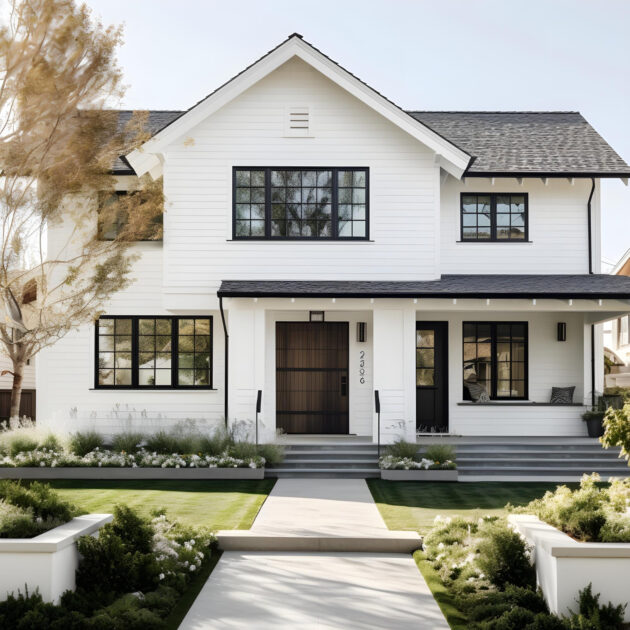
Table of Contents
Key Takeaways:
- Understand the common causes of wavy siding.
- Learn preventive measures to protect your siding.
- Discover expert tips for repairing damaged siding.
- Know when it’s time to call in a professional.
Introduction to Exterior Siding Maintenance
Maintaining the exterior of your home is crucial for its longevity and curb appeal. Siding, in particular, plays a significant role in protecting your home from the elements. However, siding can develop issues like waviness over time, compromising effectiveness. Effective prevention and repair of siding are essential to maintaining its functionality and appeal. This article will explore the top techniques for keeping your home’s exterior siding pristine for years.
Identifying Common Causes of Wavy Siding
Improper installation, temperature fluctuations, and moisture damage often cause a wavy siding issue. Vinyl siding, for example, can expand and contract with temperature changes, leading to warping if not installed correctly. Moisture can seep behind the siding, causing it to buckle and create a wavy appearance. Understanding these causes early can help in preventing extensive damage. Improper nail placement, over-tightening, and inadequate spacing during installation are other frequent culprits. These issues aren’t always readily evident but can manifest as noticeable waves and ripples as the siding material adjusts to varying environmental conditions.
Preventive Measures to Protect Your Siding
Proper Installation
To prevent wavy siding, start with proper installation. Employing skilled experts guarantees the appropriate installation of siding with the proper methods and materials, which minimizes the likelihood of warping and buckling caused by environmental fluctuations. Correct installation includes precise measurements, allowing for slight movement, and using high-quality fasteners. An experienced installer will follow the manufacturer’s guidelines to prevent common pitfalls. The extra cost upfront can save significant time and money in repairs and replacements later.
Regular Maintenance
Routine upkeep is essential for ensuring the durability of your siding. It includes cleaning the siding to remove dirt, grime, and mildew, which can trap moisture and lead to damage. Employ a garden hose and a gentle detergent mixture for regular cleaning, steering clear of high-pressure cleaners that may harm the surface. Regular inspections every spring and fall help in the early detection of potential issues. Look for any signs of warping, cracking, or loose panels. Addressing these minor issues promptly can prevent more significant, costly problems.
Ensuring Proper Ventilation
Proper ventilation can significantly reduce moisture buildup behind the siding. It involves ensuring that your attic and wall spaces are adequately ventilated and that there are no leaks in your home’s exterior that could allow moisture to penetrate behind the siding. Using moisture barriers and ensuring that gutters and downspouts function correctly are also vital steps. Proper ventilation protects your siding and enhances your home’s overall insulation efficiency.
Expert Tips for Repairing Damaged Siding
Removing and Replacing Damaged Sections
When repairing wavy siding, the first step is identifying and removing the damaged sections. It might involve removing screws or nails and carefully detaching the panels. Once removed, inspect the underlying structure for signs of moisture or rot and repair any issues before installing new siding. Use matching materials and follow the original alignment to ensure a seamless look.
Inspect and Prepare the Underlying Structure
Before installing new siding, inspect and prepare the underlying structure. Clear away debris, repair damaged sections, and ensure the surface is dry and smooth. You should also replace compromised insulation or vapor barriers. This preparation will help the new siding adhere correctly and prevent future issues. Also, ensure the new panels match the existing siding in style and color to maintain the home’s aesthetics.
When to Call in a Professional
While homeowners can repair some siding issues, significant damage might require professional intervention. Extensive waviness, moisture damage, or structural issues underlying the siding are indicators that it’s time to contact a siding expert. Professionals have the tools and experience to repair or replace siding efficiently, minimizing the risk of future issues. They can also identify hidden problems that might not be visible to the untrained eye. Investing in professional help can ensure the job is done right the first time, saving you from further headaches and expenses. Additionally, a professional can offer warranties on work and materials, providing peace of mind for the homeowner.
Conclusion
Maintaining your home’s exterior siding is critical to preserving its structural integrity and appearance. Understanding the common causes of waviness and taking preventive measures can protect your siding and extend its lifespan. Regular cleaning, proper ventilation, and periodic inspections are critical in maintaining your siding’s health. Should you encounter significant siding issues, don’t hesitate to seek professional help. Ensuring a systematic approach to siding care can maximize the longevity and efficiency of your home’s exterior elements.
